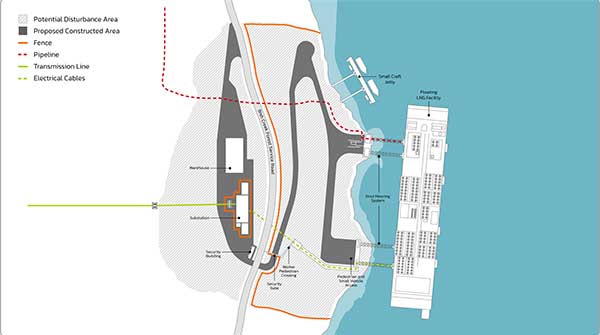Pembina and Haisla Nation forge ahead with Cedar LNG Project
 The world’s first Indigenous-owned LNG project could get the final green light to proceed by early fall, according to executives with Pembina Pipeline, the Haisla Nation’s industry partner.
The world’s first Indigenous-owned LNG project could get the final green light to proceed by early fall, according to executives with Pembina Pipeline, the Haisla Nation’s industry partner.
Under the current schedule, the Cedar LNG terminal near Kitimat, B.C., would start shipping Canadian natural gas to the world by early 2028. The owners plan to make the decision to go ahead within months.
“Everything is full speed, and we’re targeting the end of September,” Pembina senior vice-president Stuart Taylor told analysts on a recent investor call.
There are still hurdles to overcome, like finalizing costs, securing full natural gas supply and raising financing, but the company is confident everything will come into place. A big part of that confidence is because of the involvement of the Haisla Nation, which owns 50 percent of Cedar LNG.
 |
| Related Stories |
| Canada needs to ‘stop twisting itself in knots’ about LNG
|
| Indigenous leaders make case for Canadian LNG
|
| U.S. on track to double LNG exports while Canada dithers
|
“The partnership with the Haisla Nation is just a real key aspect of the project strategically over so many work streams and it shows up in the financing side as well,” said Pembina chief financial officer Cameron Goldade.
“People want to be involved with this and want to support this project.”
Cedar is a small proposed electrified floating facility with the capacity to export about three million tonnes of LNG per year, about 20 percent the size of the LNG Canada terminal that is under construction.
The project received provincial and federal approval in March, subject to more than 250 binding conditions including engagement with Indigenous peoples, marine protection, migratory birds, traditional land use, and greenhouse gas emissions.
B.C’s environmental assessment office noted Cedar LNG would have among the world’s lowest emissions, at 0.08 tonnes of carbon dioxide equivalent per tonne of LNG.
The province requires the project to work toward “near zero” emissions by 2030, and under the federal approval it must reach net zero emissions by 2050.
According to industry outlooks, world LNG demand is set to double to reach 700 million tonnes per year over the next two decades, helping meet rising energy demand in Asian economies and reducing reliance on coal.
The fuel is now also a core energy supply source for Europe following Russia’s invasion of Ukraine, analysts with Shell said earlier this year.
Mainly destined for Asia, LNG shipped from B.C. could help divert other world shipments to Europe in a domino effect that helps the world, according to Wood Mackenzie.
Pembina and the Haisla Nation are in the early stages of preparation for the startup of Cedar LNG within five years.
The partners have entered an agreement with ARC Resources to provide half of the natural gas supply required to fill the plant. Pembina expects additional supply agreements before fall, Taylor said.
A final cost estimate for construction – including building the floating LNG production and storage vessel at a shipyard in Asia – is expected this summer.
Deborah Jaremko is director of content for the Canadian Energy Centre, a Troy Media Editorial Content Provider Partner.
For interview requests, click here.
The opinions expressed by our columnists and contributors are theirs alone and do not inherently or expressly reflect the views of our publication.
© Troy Media
Troy Media is an editorial content provider to media outlets and its own hosted community news outlets across Canada.
